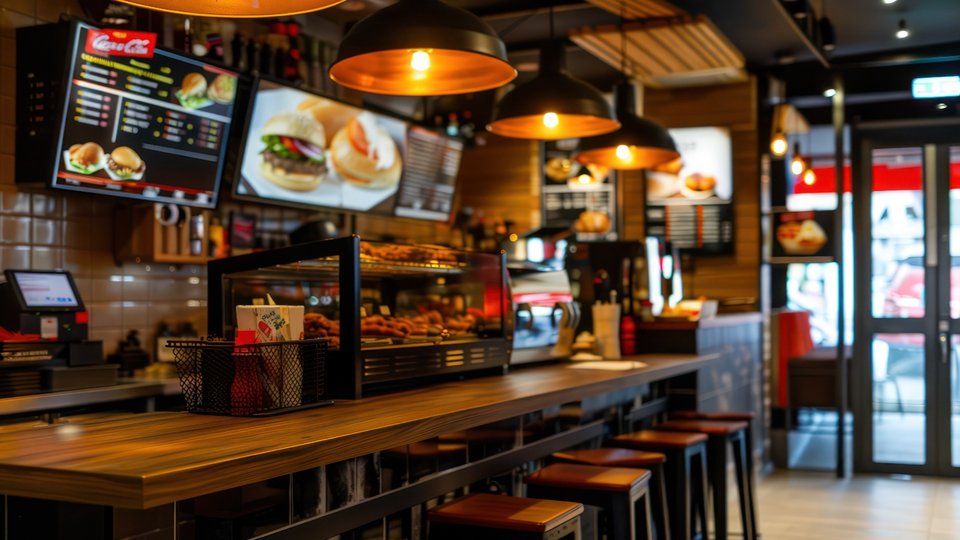Operations
QSR’s end of 2025 playbook: 3 ways to overcome economic pressures, shifting consumer preferences
To overcome economic pressures and the changing perception of fast food as a budget-friendly option, QSRs should focus on promoting affordable meal deals, leveraging menu innovation within popular categories and driving upsells and incremental visits through digital loyalty platforms.

October 17, 2025 by Nataly Kelly — Chief Marketing Officer, Zappi
2025 is shaping up to be one of the toughest years for QSRs in recent history. The Q2 earnings results from Yum! Brands, McDonald's, Restaurant Brands International, Wendy's and others reflect this challenge by painting a clear picture: QSRs are navigating tariffs, cost inflation and cautious spending – particularly among lower-income consumers. Investors will be watching Q3 even more closely as we head into a full year of results.
In fact, new research echoes these pressures, finding that just 14% of consumers see fast food as a budget-friendly option, with nearly 1 in 4 describing it as a "treat" or "reward." And, with80% of Americans saying they aren't prepared for more price hikes, QSRs could be entering critical territory.
So, what comes next? The playbook can't be about business as usual. The old model of "cheap and fast" is cracking under the weight of economic reality and consumer expectations. Winning brands will be the ones that balance affordability with creativity, deepen loyalty and find new ways to grow ticket sizes.
Here are the top three ways that QSRs can execute on this overall strategy.
Promote affordable meal deals
While value meals and bundled deals have always been a mainstay on QSR menus, their importance is only growing with consumers more aware than ever of their shrinking budgets. A great example of this is Costco's hotdog and Coke combination, which has stayed at $1.50 since 1985 – a classic example of a loss leader: intentionally low-priced to draw traffic and grow basket size. The challenge is balancing affordability with profit margins. QSRs need to be strategic with pricing, creating perceived value while delivering a satisfying customer experience.
Fast food is no longer just a quick, cheap bite. Consumers view it as a micro-indulgence, so adding unique twists to familiar favorites can make it feel worth the spend. The key is to balance value with menu innovation to offer menu items that will satisfy the diner, be distinctive (and fun!) and priced right for today's market.
Ramp up menu innovation within a framework
Menu innovation is the key to increase consumer traffic and grow sales. One area QSRs need to more closely look at is high-demand categories like chicken. If the "chicken sandwich wars" phenomenon has taught us anything, it's that new innovative menu items that are marketed well can spark renewed interest for consumers and increase ticket sizes. High-demand categories like chicken are versatile, healthier-seeming than beef, and ripe for creative riffs. Even a new sauce or indulgent topping can reignite interest in a staple.
Recent research also shows why this matters: when fast food chains introduce premium menu items, like wagyu, truffle fries or brioche buns, 30% of consumers say they're excited to try them. That jumps to 42% among parents.
The impact is clear: combining an emphasis on value offerings with new and exciting innovation helps reach both ends of the consumer spectrum. With a strategic mindset, QSRs can test small changes, pivot based on real-time feedback and use connected insights to quickly evaluate concepts and innovate where demand is strongest.
Driving upsells and incremental visits through loyalty platforms
Digital engagement and loyalty programs help increase consumer awareness, visits and average spend. Brands like Starbucks, McDonald's, Dunkin' and Chic-fil-A all have loyalty programs with millions of active members, helping them to reap the rewards of these programs. The consumer engagement data collected by these programs is also a gold mine that QSRs can use to create tailored experiences based on what's important to customers, driving incremental visits in the process.
It's more important than ever to deepen consumer relationships. QSRs should consider personalized offers that drive add-on purchases—extra toppings, premium ingredients, protein add-ins, or impulse buys like desserts. They can also increase incremental visits during slower periods by promoting snacks or sides. Campaigns like Domino's You Tip, We Tip show the power of addressing consumer pain points—by paying it forward and giving customers a coupon when they supported staff, the brand drove repeat visits while reinforcing goodwill.
As QSRs look to improve their outlook in Q3 and beyond, they should keep in mind that economic pressures like tariffs and inflation as well as price-conscious consumers will continue to be major factors that affect them as well as customers.
These brands have an opportunity to reframe fast food as not just a "treat." As the palate of America diversifies, so too will the menu offerings from QSRs who seek to win long-term.
By focusing on these areas — and grounding decisions in connected insights — QSRs will be able to adapt and overcome these challenges more easily to stay competitive and come out on top.
About Nataly Kelly
Nataly Kelly is Chief Marketing Officer at Zappi, a consumer insights platform for advertising, innovation, and brand insights. A multi-time author and longtime contributor to Harvard Business Review, her latest book is "Brand Global, Adapt Local. She is a former market researcher and Chief Research Officer, and previously served as VP of Marketing at HubSpot.




